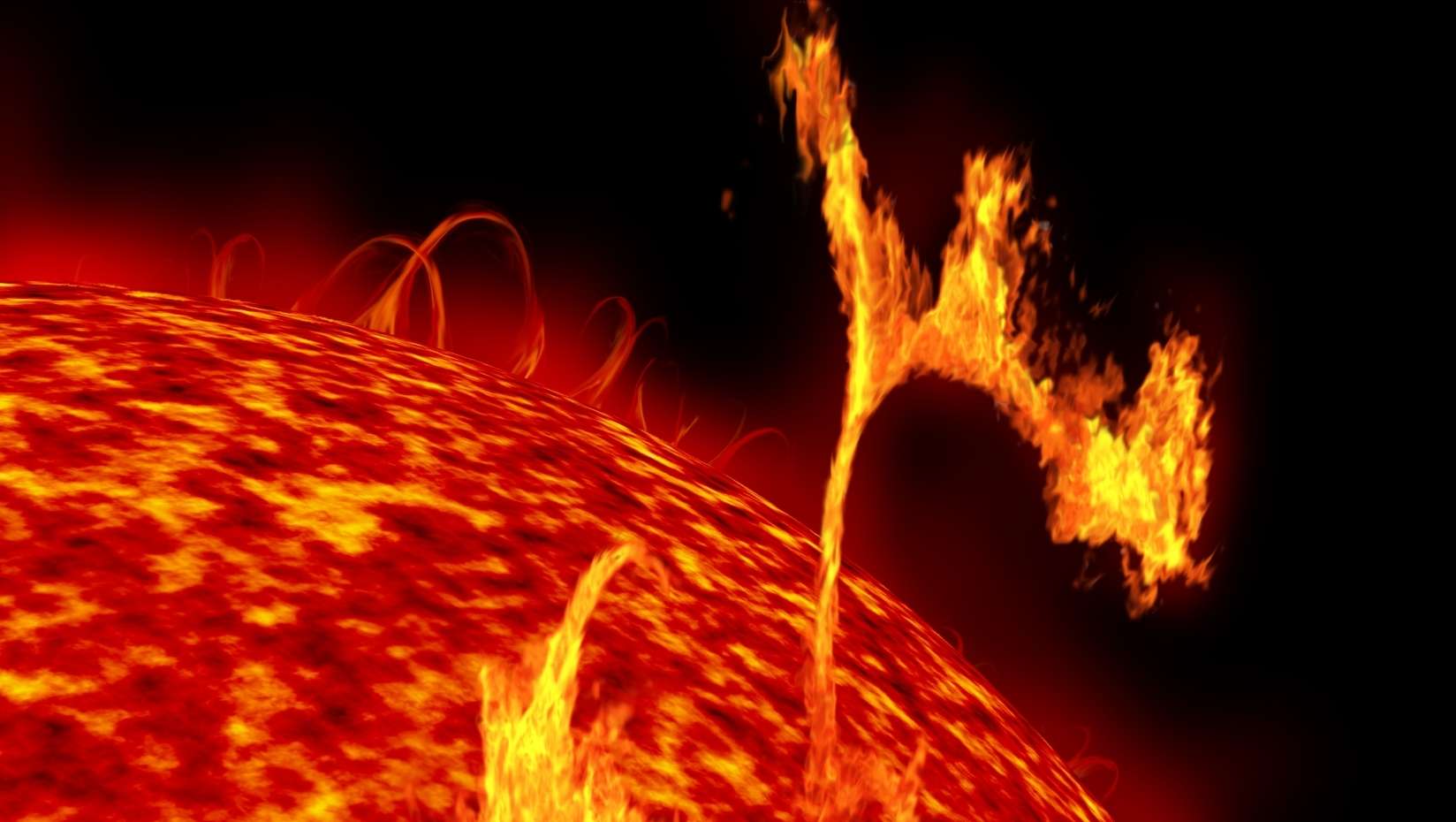
Solar storm triggers rare summer glimpse of northern lights throughout Maine
Did you see the northern lights in the sky Wednesday night?
The northern lights, or aurora borealis, are typically visible throughout the Arctic, Canada and Alaska during the winter. However, Mainers may have had a rare summer glimpse if they braved the latest heat wave to observe the beautiful light show in the sky.
“Seeing the aurora borealis is one privilege to living in Maine,” says David Batuski, a professor in the Department of Physics and Astronomy at the University of Maine who researches observational cosmology, large-scale structure in the universe, and dynamics of galaxy clusters.
The northern lights were visible in August because of a solar storm that hit Earth.
Solar storms, also called solar flares, occur sporadically throughout the sun’s 11-year cycle. The sun has magnetic fields that sometimes become tangled and twisted, creating dark-colored spots on the sun. The magnetic fields snap like a rubber band to become untangled and release charged energy particles into space in a coronal mass ejection. If the charged particles hit Earth, they collide with gaesous particles in the atmosphere, causing the aurora borealis to appear.

The northern lights could be seen mid-week, but the solar flare that caused them actually occurred four days earlier on Sunday, July 31. “The energy travels at almost 2 million miles per hour, but that means it takes a couple of days to get here because we’re about a hundred million miles away from the sun,” explains Batuski.
There’s no need to be alarmed, though, he says. “This was not a major storm.”
The National Oceanic and Atmospheric Administration (NOAA) Space Weather Prediction Center (SWPC) warned that the storm could cause power grid fluctuations and issues with satellites.
“Even a minor storm could be pretty spectacular though, if Earth happens to be right in the line of the material that’s coming from the sun. It’s not just how strong the storm is, but it’s also how well things are lined up.”
Under the right conditions, a powerful enough solar storm could totally disrupt internet and electrical grids, cause communication systems and satellites to fail, and result in trillions of dollars of damage and dangerous conditions for people around the world.
In 1859, Earth was hit by the most catastrophic solar storm ever recorded, known as the Carrington Event. The telegraph communication system failed. Operators received electric shocks from equipment and telegraph paper caught fire. The aurora borealis could be seen as far south as Colombia. In 1989, we were hit by a solar storm three times smaller than the Carrington event, resulting in the Hydro-Quebec electric grid collapsing.
Batuski says that the amount of solar activity varies throughout certain periods of the sun cycle. “It’s been frustrating for the last few years with my astronomy class, because when we have students out during the day to observe the sun spots, there haven’t been any, because the sun has been very, very quiet.”
According to NASA, the sun’s activity will continue to increase until the cycle peaks in 2025. In 2019, NASA and NOAA predicted that this cycle would be quiet with minimal solar activity. However, there have been studies since then that suggest this could actually be one of the strongest, most active cycles ever recorded.
Unless we’re hit by another solar storm in the coming months, the next opportunity for Mainers to see the northern lights again will likely be between December and February.
Batuski says that he’s seen the aurora borealis many times while driving throughout Maine on I-95. “I would be looking off in the distance on a clear night, and I’d think, ‘Is there a city over there? What the heck? What is that?’ And a couple times we stopped and looked and it was the northern lights off to the north a little bit from the highway, so definitely you can see them here. We’re far enough north that the northern lights show up fairly often.”
He offers advice on viewing the aurora borealis. His number one tip? “You need to look toward the northern horizon to see the northern lights. They’re not usually right above you in the sky.” If you live in an urban area like Bangor, he also recommends driving away from the city lights to a more rural location. This minimizes light pollution, creating more optimal viewing conditions.
“It’s really neat to realize that you’re seeing something that was the direct result of an explosion on the sun just a couple of days ago.”
If the sun cycle follows recent predictions, the next few years could be very exciting.
Batuski says, “Take advantage, Mainers. Get out there and enjoy the spectacle.”
Contact: research@maine.edu
Written by Ally Cooper
